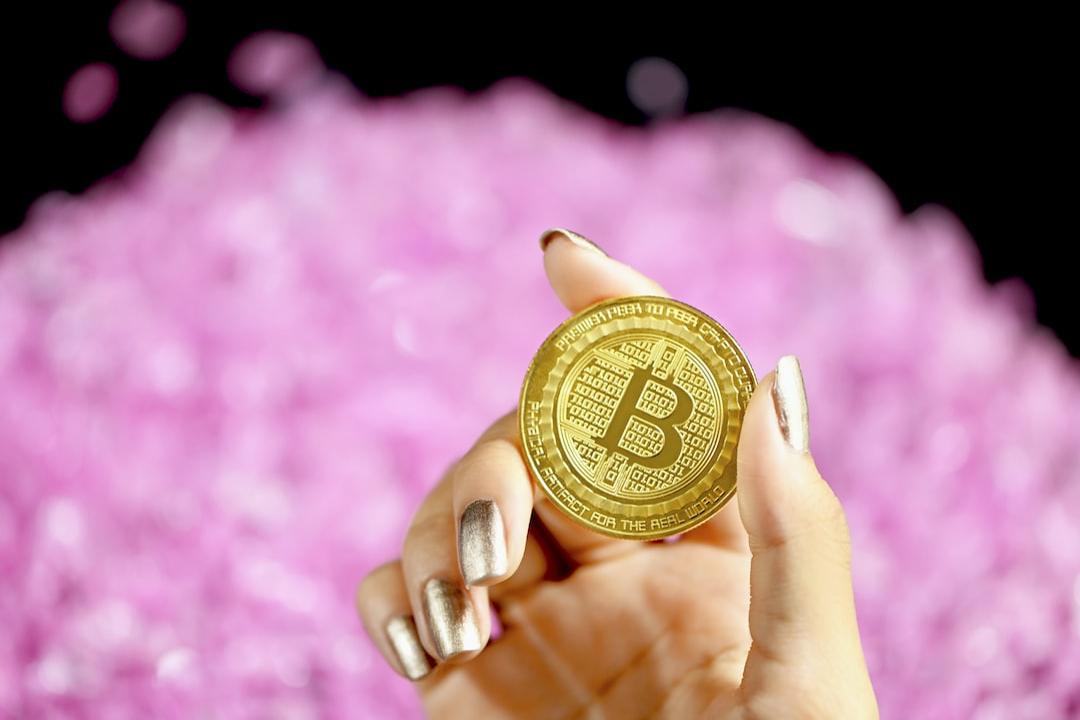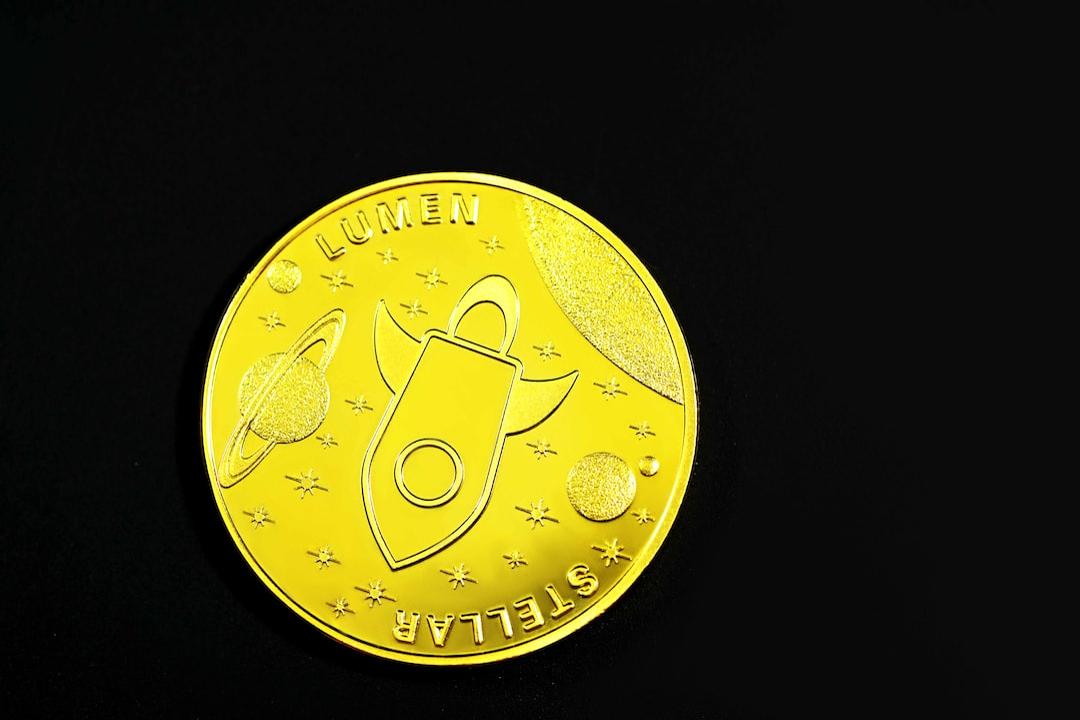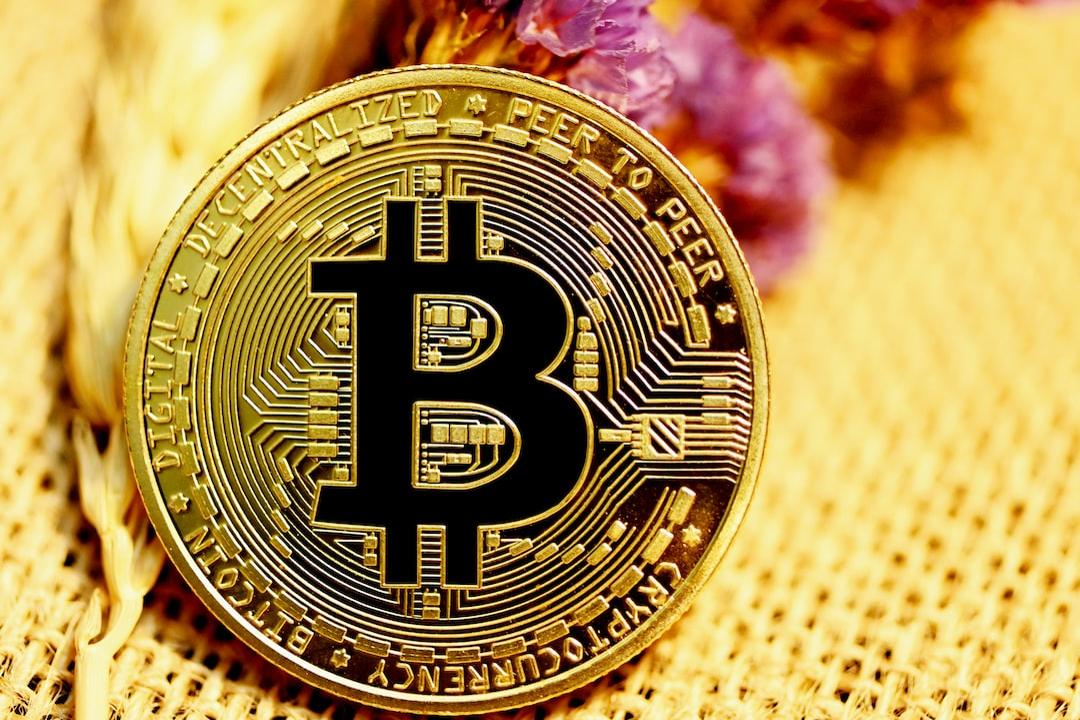Table of Contents
- Market Dynamics
- Analysis of the ACT Flash Crash Incident
- Event Summary: From Rule Adjustments to Market Collapse
- Who is to Blame?
- Binance’s Response
- What Can Investors Learn?
- Binance Followed Orders Analysis
- GTRadar – BULL
- GTRadar – BALANCE
- GTRadar – Potential Public Chain OKX
- Focus News

Market Dynamics
At the end of March, U.S. stocks experienced a significant drop, triggering panic in the market, which nearly caused a thousand-point decline in the Taiwan Weighted Index on that day. Meanwhile, gold continued to reach historical highs, reflecting a peak in market risk aversion. Global investors were focused on the details of Trump’s “Reciprocal Tariff” plan to be announced at 4 PM Eastern Time on April 2. This policy not only relates to global trade trends but also influences the current market direction.
On the news front, the information released by the White House was inconsistent: on one hand, it stated that a 25% high tariff would be imposed on imported cars with no exemptions, while on the other hand, it claimed that countries could apply for lower tax rates through certain measures, causing significant market volatility. BlackRock pointed out that due to the unpredictability of Trump’s policies, concerns about an economic recession have reached a peak.
The cryptocurrency market also saw a correlated correction; however, unlike U.S. stocks, most mainstream cryptocurrencies experienced a mild rebound after Bitcoin stabilized. Yet, the altcoin market faced significant adjustments following the recent ACT crash incident, indicating that aside from a few mainstream coins, the liquidity of most altcoins is extremely poor. The true value of ‘zombie coins’ in the market will eventually be revealed, as shown by the continuous decline in market capitalization of newly listed coins, indicating that investors are reassessing the value of these coins.
The trading environment in March was extremely challenging, lacking a narrative and with heightened risk aversion. However, will the market see a turning point in April? Potential factors that may drive a reversal in the cryptocurrency market include:
– The landing of U.S. federal and state Bitcoin strategic reserves details
– Circle’s anticipated application for listing this month
– Progress on stablecoin legislation
– The Federal Reserve’s reduction of QT scale starting in April, easing capital pressure
These potential positive factors could become key catalysts for a market reversal.
In the past two weeks, Bitcoin has formed a converging triangle consolidation structure and successfully broke upward at the beginning of April. As shown in the chart, the price repeatedly found support at the red upward trend line (yellow arrows), especially after the last retest at the end of March, where trading volume significantly increased, indicating a clear intent from bullish funds to enter the market.
Technically, the price has successfully stabilized above the previous resistance area (around $82,000) and has broken through the downward trend line. In the short term, it is expected to challenge the resistance range of $88,000 to $89,000. If it can break through this range with increased volume, subsequent rebound targets could reach $92,000.
However, the trading volume has not continued to increase. If momentum cannot be sustained going forward, Bitcoin may still retest support around the defensive line of $83,000 to $82,000. Overall, the structure seems to indicate that a bottom has been formed, entering the initial stage of a consolidation upward.
On April 1, 2025, the cryptocurrency market experienced a shocking flash crash, with several low-market-cap tokens, led by ACT, halving in price within just half an hour, with declines ranging from 20% to 55%. This sudden drop not only caused significant losses for investors but also exposed the vulnerabilities of exchange risk control mechanisms, market maker strategies, and the meme coin ecosystem. Binance attributed the incident to “whale sell-offs,” but based on market data, timelines, and the responses of related parties, this storm cannot be explained by a single factor; rather, it is a systemic crisis interwoven with multiple factors.
The starting point of everything was at 15:32 on April 1, when Binance announced adjustments to leverage and margin tiers for several U.S. dollar-denominated perpetual contracts, including ACT. Such adjustments are not uncommon and are intended to limit the risks of high-leverage trading and protect market stability. For example, the contract position limit for ACT was reduced from $4.5 million to $3.5 million, meaning that the maximum position size that investors could hold was reduced. If excess positions were not adjusted in time, the system would forcibly liquidate at market price when the adjustments took effect at 18:30.

As expected, 18:30 became a turning point. The price of ACT plummeted from $0.1899 to $0.0836, a drop of up to 55%, while tokens such as TST, HIPPO, and DEXE also experienced declines of 20% to 50%. CoinGlass data showed that the open interest for ACT contracts dropped over 75% at the same time, and other tokens affected by the adjustments showed similar situations.

This series of price crashes and evaporating positions demonstrated an instantaneous depletion of market liquidity, triggering panic selling and a cascading effect.
The truth behind this flash crash is not simple and involves multiple games between exchanges, market makers, and the market itself.
1. The exchange underestimated the impact of risk control measures.
Binance’s rule adjustment appeared to be routine risk management, but the timing and execution ignited a market minefield. The adjusted position limit directly impacted high-leverage players, particularly market makers and whales, who typically rely on large positions to maintain liquidity and spread profits. When the system’s forced liquidation was activated, a massive influx of sell orders poured into the contract market, causing prices to collapse first, which then affected the spot market, leading to a chain reaction. Some in the community believe this was Binance’s attempt to guard against the whale manipulation risks recently faced by Hyperliquid, but the result was counterproductive, prematurely igniting a potential crisis.
2. Wintermute’s sell-off suspicions.
Wintermute, as a market maker for ACT, drew considerable attention during the incident. After the plunge, on-chain data showed it withdrew and sold ACT and other meme coins from Binance, leading the community to speculate that this downturn was deliberately instigated by Wintermute. However, we believe that as a market maker, conducting off-chain and on-chain arbitrage during market volatility is reasonable behavior. Furthermore, with Binance recently cracking down on malicious actions by market makers, Wintermute had no reason to break the law or jeopardize its reputation by doing so. Nevertheless, it cannot be denied that Wintermute’s sale of ACT may have exacerbated market panic, indirectly triggering further market declines.
3. The inherent fragility of meme coins.
The crash of low-market-cap meme coins like ACT was not coincidental but rather stemmed from the widespread issues of insufficient liquidity and weak value support among low-market-cap tokens. These tokens often rely on community enthusiasm and speculative sentiment for propulsion. Once they encounter external shocks (such as rule adjustments or whale sell-offs), the trading depth cannot bear the selling pressure, resulting in prices plummeting like a cliff. If the same conditions were applied to more liquid tokens like DOGE, TON, or LINK, such a severe reaction would certainly not occur.
After the incident, Binance quickly released a report stating that the ACT crash was due to the sell-off of approximately $1.05 million in spot tokens by three VIP users and one non-VIP user, denying that the rule adjustments were the primary cause.

However, this claim is difficult to convince the community. Firstly, the evaporation of 75% of the ACT contract open interest does not match the scale of the spot sell-off, indicating that the forced liquidation in the contract market was the initial trigger. Secondly, the simultaneous decline of multiple tokens is difficult to explain solely by the sell-off of individual whales; it resembles a chain reaction triggered by rule adjustments.
This incident left investors with a painful lesson. Many investors, even with stop-losses set, were unable to close positions due to the rapid decline, ultimately incurring losses far exceeding expectations. Overall, Binance’s risk control intentions may have aimed to protect the market but inadvertently exposed the fragility of the cryptocurrency ecosystem; the actions of market makers exacerbated the chaos, while the inherent defects of meme coins became the last straw that broke the camel’s back. In this market dominated by institutions, whales, and algorithms, retail investors often can only passively endure volatility. In the future, as regulation strengthens and the market matures, such incidents may decrease; however, until then, maintaining vigilance and investing rationally is key to survival.

Follow Order Link

Follow Order Link

Follow Order Link
translated_news
GTRadar – BULL, GTRadar – Balanced, and GTRadar – Potential Public Chain OKX Performance
The 7-day returns of 『GTRadar – BULL』, 『GTRadar – Balanced』, and 『GTRadar – Potential Public Chain OKX』 are -1.01%, -0.66%, and -1.29%, respectively. The 30-day returns are -0.58%, -2.11%, and -0.78%, respectively.
Currently, 『GTRadar – BULL』 holds a net long position of approximately 15%, mainly in BNB.
Currently, 『GTRadar – Balanced』 holds a net long position of approximately 5%, mainly in BTC.
Currently, 『GTRadar – Potential Public Chain』 holds a long position of approximately 5% in BTC and a short position of 5%, mainly in ADA and AVAX.
Frequent Portfolio Switching May Reduce Long-term Gains
Investors who frequently change their portfolios tend to have lower long-term returns than those who consistently follow a single portfolio. Do not end copying trades prematurely due to short-term drawdowns; based on trend charts, drawdowns often present a good opportunity to start copying trades. Frequent entry and exit significantly reduce returns.
Hyperliquid Liquidity Pool Faces Another Liquidation Crisis
Recently, traders have been exploiting Hyperliquid’s liquidation mechanism with “planned operations,” causing significant floating losses in the HLP Vault. Following a previous incident where a Hyperliquid whale withdrew margin and forced liquidation onto the vault, new actors have replicated this strategy, making the Hyperliquid liquidity pool a focal point once again.
U.S. Senate Overturns IRS DeFi Broker Rule for the Second Time
According to information shared by former Fox Business reporter Eleanor Terrett, the Senate passed the Congressional Review Act (CRA) on the 27th with a final vote of 70 to 28, overturning the IRS DeFi broker rule for the second time. The bill will be sent to President Donald Trump for signing, after which it will take effect.
OpenAI’s 4o Image Generation Triggers “Ghibli-style” Craze
On Tuesday, OpenAI launched the GPT-4o integrated image generator, touted as the “most advanced image generator to date.” With the ability to produce “precise, accurate, and realistic outputs,” the generator is particularly adept at replicating Studio Ghibli’s anime style, causing a global sensation.
U.S. Investor Bearish Sentiment Reaches Historic Highs
According to the latest survey by the American Association of Individual Investors (AAII), bearish sentiment on U.S. stocks has exceeded 50% for five consecutive weeks, marking the second-highest level in history. Research firm Bespoke Investment Group noted that since 1987, this is only the fourth time such prolonged bearish sentiment has occurred, with the last instance in October 2022, during a bear market low.
Chunghwa Post Ends “Exchange Deposit Account” Transfers
Chunghwa Post announced today that it will terminate agreed transfers related to virtual currency platforms (crypto exchanges). This means users will no longer be able to transfer funds into crypto exchange deposit accounts via agreed transfers.
U.S. Stablecoin Regulation Bill Proposes Banning “Yield-bearing Stablecoins”
The draft of the 2025 Stablecoin Act (STABLE) was released yesterday, aiming to establish a stricter regulatory framework for stablecoins to ensure stability and security, protect consumers, and reduce financial system risks. However, the proposed ban on “yield-bearing stablecoins” has sparked widespread industry criticism.
Goldman Sachs Raises U.S. Recession Probability, Predicts Three Fed Rate Cuts in 2025
According to CNBC, as President Donald Trump prepares to announce a new round of tariff measures this week, Goldman Sachs predicts the aggressive tariffs will drive up inflation and unemployment, leading to economic stagnation.
Mining Giant MARA Plans $2 Billion Stock Issuance, Partly for Bitcoin Purchases
On March 28, MARA filed an 8-K report and prospectus with the U.S. Securities and Exchange Commission (SEC), stating that it has reached an at-the-market (ATM) issuance agreement with Cantor Fitzgerald and Barclays to sell up to $2 billion in stock. Some of the proceeds will be used to purchase more Bitcoin.
Eric Trump and Hut 8 Launch New Bitcoin Mining Firm “American Bitcoin”
Bitcoin mining company Hut 8 announced on Monday that it has partnered with Eric Trump, Executive Vice President of the Trump Organization, to establish a new mining firm, American Bitcoin. Hut 8 holds the majority stake, focusing on industrial-scale Bitcoin mining and strategic Bitcoin reserves. Additionally, American Bitcoin is reportedly planning an IPO.
Strategy Acquires 22,048 Bitcoins for $1.92 Billion
On Monday, U.S. software company Strategy (formerly MicroStrategy) announced that between March 24 and March 30, it purchased approximately 22,048 bitcoins at a total cost of $1.92 billion, with an average purchase price of $86,969 per bitcoin.
U.S. Stocks Record Worst Quarterly Performance Since Q1 2022
Due to the impact of Trump’s new tariff policies, U.S. stock performance in Q1 was dismal. The “Tech Seven” led the decline, exerting significant pressure on the U.S. stock market. Tesla plummeted 36% for the quarter, while Nvidia fell nearly 20%. Both the S&P 500 and Nasdaq recorded their worst quarterly performance since 2022.
Tether Adds 8,888 Bitcoins in Q1, Total Holdings Surpass 92,000
Since May 2023, Tether has committed to using 15% of its profits to purchase Bitcoin as a reserve asset. As of now, the company holds a total of 92,647 bitcoins, valued at approximately $7.64 billion, with an average purchase price of $41,147. The current unrealized profit stands at $3.83 billion.
BitMEX Co-founder Arthur Hayes Remains Bullish on Bitcoin
In his latest article, BitMEX co-founder Arthur Hayes predicted that the Federal Reserve’s policy shift will push Bitcoin prices to $250,000 by the end of the year.
BlackRock CEO Warns U.S. Debt Crisis Could Lead to Bitcoin Replacing the Dollar
BlackRock CEO Larry Fink warned in his latest annual shareholder letter about the U.S. economic outlook and expressed optimism about digital assets and tokenization. He stated that if the U.S. fails to control its soaring national debt and deficit, Bitcoin and other digital assets could replace the dollar as the world’s reserve currency.
ACT Token Plunges Due to Binance Contract Rule Adjustments
According to BlockCred co-founder @CnmdRain, the sharp decline of ACT and several other tokens on the evening of April 1 was not due to institutional sell-offs but was triggered by Binance’s adjustments to contract position limits and leverage ratios.
Study Finds Most Crypto Projects Earn Less Than $1,000 Monthly
A study by 5 Phut Crypto and Storible revealed that most crypto projects do not generate significant revenue, with 85% earning less than $1,000 per month. Of the 4,928 crypto projects analyzed, 95% of DeFi projects earned less than $1,000 monthly, and even among billion-dollar projects, 86% failed to surpass this minimal revenue thresholdIt looks like you’ve uploaded an image, but since you mentioned to ignore it, I won’t process it. Let me know if you need help with anything else!

